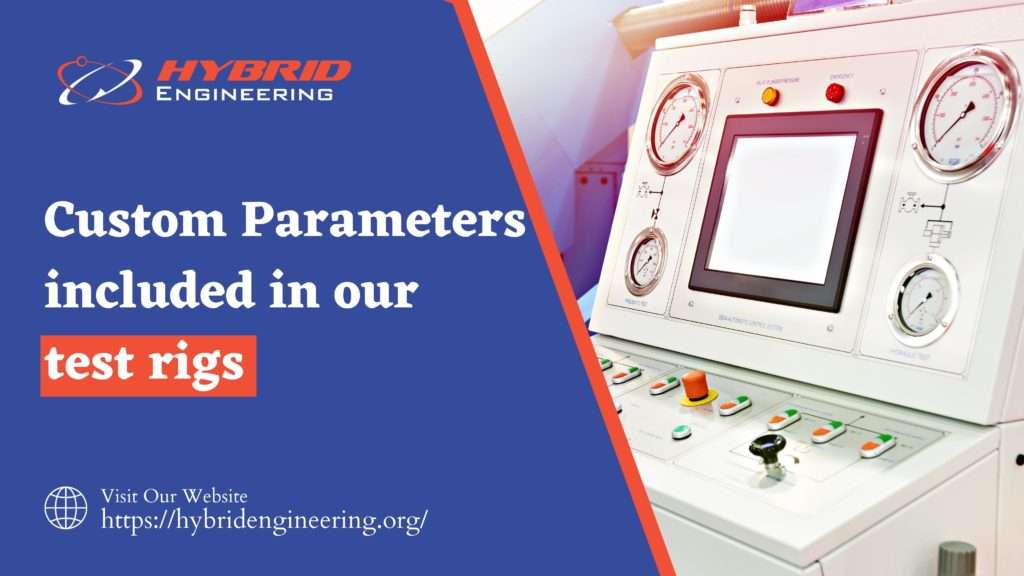
Hybrid engineering can customize test rigs for auto parts in several ways:
- Physical and numerical simulations: Our engineers combine physical testing with numerical simulations to provide a more comprehensive understanding of the part’s behavior. The test rig can be configured to apply loads and conditions to the part in a controlled manner, while sensors and cameras are used to collect data. The collected data can be used to validate the results of the numerical simulations.
- Load and condition replication: Hybrid engineering can be used to replicate real-world loads and conditions that the auto parts will be exposed to. This can include temperature, humidity, vibration, and other environmental factors. By simulating these loads and conditions in the test rig, manufacturers can gain a more accurate understanding of how the part will perform in the field.
- Dynamic testing: Hybrid engineering can be used to conduct dynamic testing on auto parts. This can include testing the part’s performance under various loads and conditions that change over time. By using a test rig that can simulate these dynamic conditions, manufacturers can gain a more accurate understanding of how the part will perform in the field.
- Customized data acquisition: Hybrid engineering allows for the collection of a large amount of data from various sensors and cameras. The test rig can be customized to collect specific data that is relevant to the part’s performance, such as stress, strain, and temperature.
- Real-time monitoring: Hybrid engineering allows for real-time monitoring of the part’s behavior during testing. This enables manufacturers to make adjustments to the test rig as needed and take corrective action if the part’s performance deviates from the expected results.
More can be added according to customer needs.
By customizing test rigs using hybrid engineering, manufacturers can gain a more comprehensive understanding of the behavior of auto parts under real-world conditions, and make more accurate predictions of the part’s performance in the field.
Note: All parameters written here are subjected to requirements.